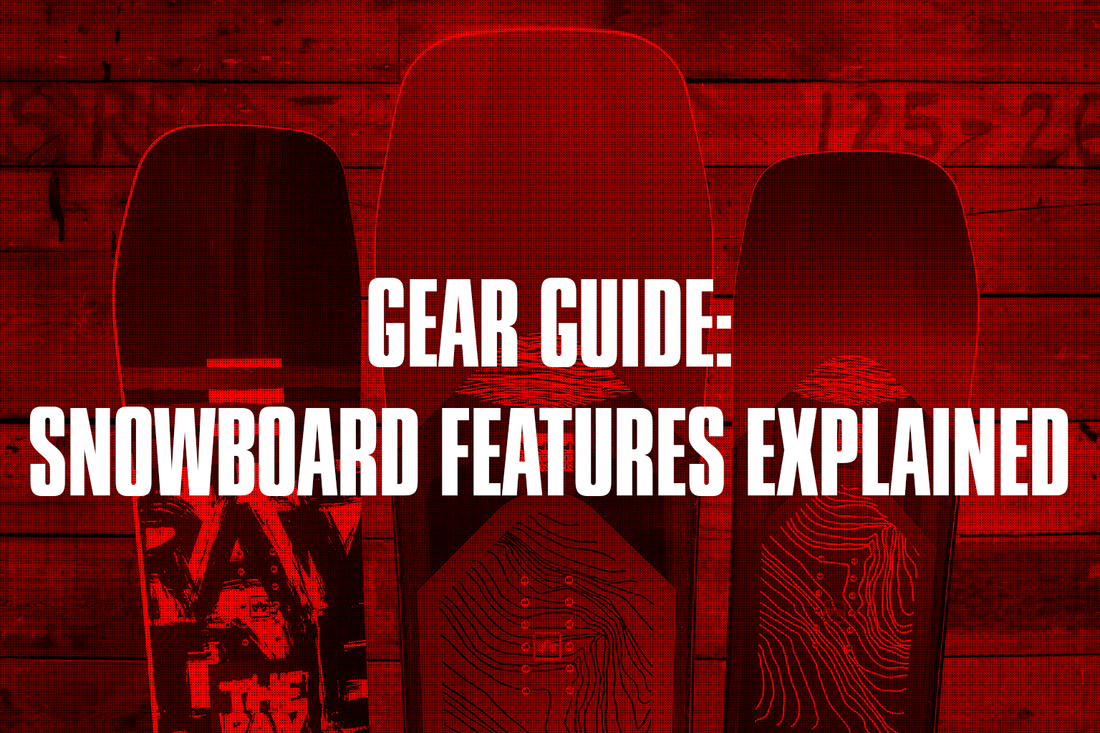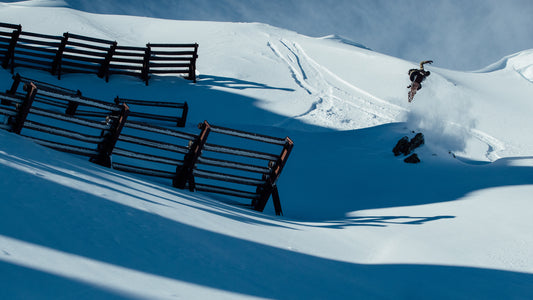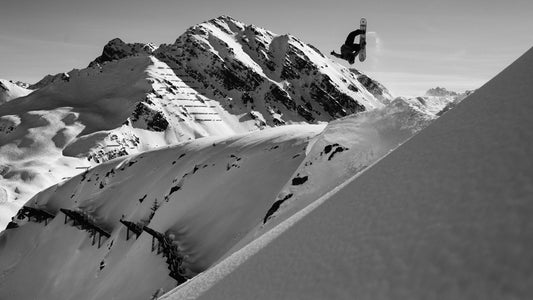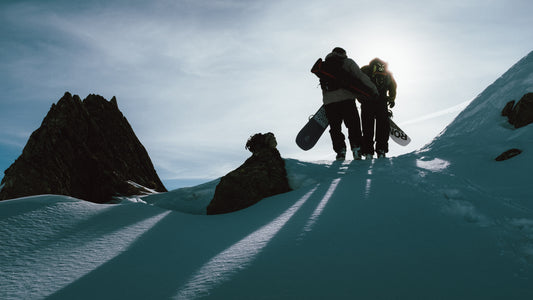The materials and technology behind Rome’s board construction
Snowboards are just wood, plastic and a little bit of metal, right? Unfortunately for anyone looking to build their own deck, it’s not quite that simple.
Every Rome snowboard begins with an idea. That might be a dream line through the park, or a powder day, or just a specific riding style. To develop this idea into a board that offers the right characteristics, we draw on years of experience and a grip of exclusive technology. The more you learn about the construction of a snowboard, the more you’ll understand why it rides the way it does. This in turn will help you make better purchasing decisions.
Let’s dive under the hood.
Base Material
As the surface that actually glides over the snow, the base is critical to any snowboard. There are several variations, depending on your budget and priorities.
An extruded base is formed from a solid sheet of p-tex. It’s durable and affordable, and the performance doesn’t change much if you forget to wax. Damage to an extruded base is relatively easy to fix with fresh p-tex, so it’s generally simple to maintain. We have two versions of extruded bases: Impact and PowerSlide.
Our Impact Base - as the name suggests – can withstand heavy abuse on rails and boxes. It’s easy to repair and requires infrequent waxing; you’ll find it primarily on beginner and park-oriented models like the Royal and the Mechanic.
Our PowerSlide Base is an upgraded, faster, and more durable extruded base which can be found on models like the Agent, the Heist and the Artifact.

On the flipside, sintered bases are made from fine granules of p-tex that have been melted together to form a porous structure that sucks up wax. A sintered base is faster (there are different levels here – from standard to full-on race grade) but it will require regular waxing and servicing to perform at its best.
Our Sinterspeed Base (found on the Stale Mod and the National, for example) is focused on pure wax-burning performance. It’s lightning quick on the trails and guarantees you’ll clear those big park jumps when speed is your friend.
The Sinterstrong Base (featured on the Party Mod and the Gang Plank, among others) offers a useful balance of speed and toughness for everyday shredding.

Core Materials
You can choose from a bunch of different woods to build the core of a snowboard, but for us, poplar and paulownia hit the sweet spot in terms of weight, strength and liveliness. We’ll vary the exact blend of each depending on how we want to tune each board – stiffer or softer, stronger or lighter.
As well as wood, the inside of a snowboard includes layers of other materials like carbon and fiberglass. By aligning the fiberglass in different ways we can adjust the flex. For example, a wide snowboard can be fine-tuned torsionally so it feels as lively and agile as a narrower board (see our in-depth article: Do I Need a Wide Snowboard?)
Rome snowboards are known for their pop. The secret is an exclusive technology we call Hotrods, which are thin columns of carbon or bamboo milled directly into the wood core. On models like the Ravine Select, National and Freaker, the Hotrods are contained within an additional carbon shell which we call Omega Construction.
Hotrods beef up the flex and increase response, so depending on where exactly we put them in a board we can tailor a board’s stability and pop. For instance, they can provide extra support in the long nose of a powder snowboard, or we can position them near the tail of boards like the Ravine to boost the drive out of turns.
Last up, our Impact Plates consist of extra fiberglass layers directly under the inserts. They provide additional reinforcement where the bindings exert maximum stress (extending the life of your snowboard) and effectively dampen vibrations and heavy landings. Impact Plates are found exclusively on the Artifact, Gang Plank, Party Mod, Stale Mod, Stale Crewzer, National and Ravine Select.
Edges & Sidewalls
Sidewalls are the outer barrier that protects the core of a snowboard; they also play a role in how it performs. Our sidewalls are made from a material which has a dampening effect, smoothing out the ride and increasing the board’s resistance to damage from repetitive shocks.
All our edges are made from high quality stainless steel for guaranteed grip in ice, hardpack or slush.
Tip Technology
We’ve made some subtle adjustments to the nose and tail of our snowboards that have a big effect on performance. With Diamond 3D, the contact points are slightly raised – think of it like the concave of a skateboard. On hardpack, this reduces the chances of catching an edge, which is why we run it at both ends (aka Twin Diamond 3D) on our kids and youth snowboards, the Minishred and Slapstick. In powder, the concave effect creates smoother turn initiation and improves glide, so we use Directional Diamond 3D in the nose of freeride models like the Ravine Select, Ravine and Women's Ravine – as well as our pow-focused Stalefish and Service Dog.


Our latest innovation is Double Kick, which you’ll find in the nose and tail of the Artifact. Here the tips rise at two different angles, which creates a more stable contact area for presses and butters and increases support for landings.






